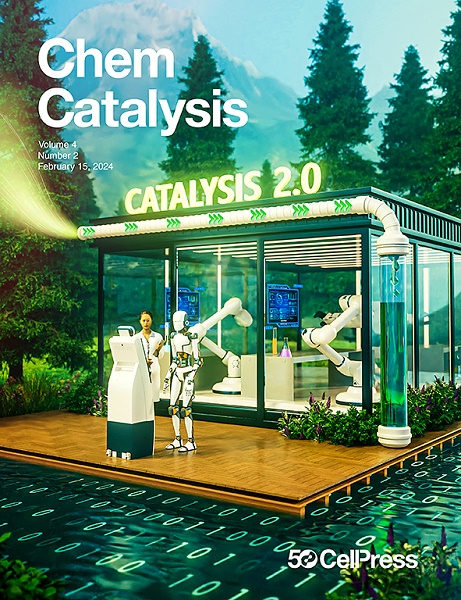钠介导级联氨合成中的解耦电子转移和N2活化
IF 11.6
Q1 CHEMISTRY, PHYSICAL
引用次数: 0
摘要
在《焦耳》5月刊上,Manthiram及其同事报道了钠-萘-钛电化学级联氮还原氨电合成的速率为475 nmol cm - 1 s - 1,法拉第效率为24%。这项工作为开发除锂以外的高效、低成本金属介导的氨反应器提供了一个有希望的范例。本文章由计算机程序翻译,如有差异,请以英文原文为准。
Decoupling electron transfer and N2 activation in sodium-mediated cascade for ammonia synthesis
In the May issue of Joule, Manthiram and co-workers report a sodium-naphthalene-titanium electrochemical cascade of nitrogen reduction for ammonia electrosynthesis at a rate of 475 nmol cm−1 s−1 and a Faradaic efficiency of 24%. This work provides a promising paradigm for developing efficient and low-cost metal-mediated ammonia reactors beyond lithium.
求助全文
通过发布文献求助,成功后即可免费获取论文全文。
去求助
来源期刊
CiteScore
10.50
自引率
6.40%
发文量
0
期刊介绍:
Chem Catalysis is a monthly journal that publishes innovative research on fundamental and applied catalysis, providing a platform for researchers across chemistry, chemical engineering, and related fields. It serves as a premier resource for scientists and engineers in academia and industry, covering heterogeneous, homogeneous, and biocatalysis. Emphasizing transformative methods and technologies, the journal aims to advance understanding, introduce novel catalysts, and connect fundamental insights to real-world applications for societal benefit.

 求助内容:
求助内容: 应助结果提醒方式:
应助结果提醒方式:


